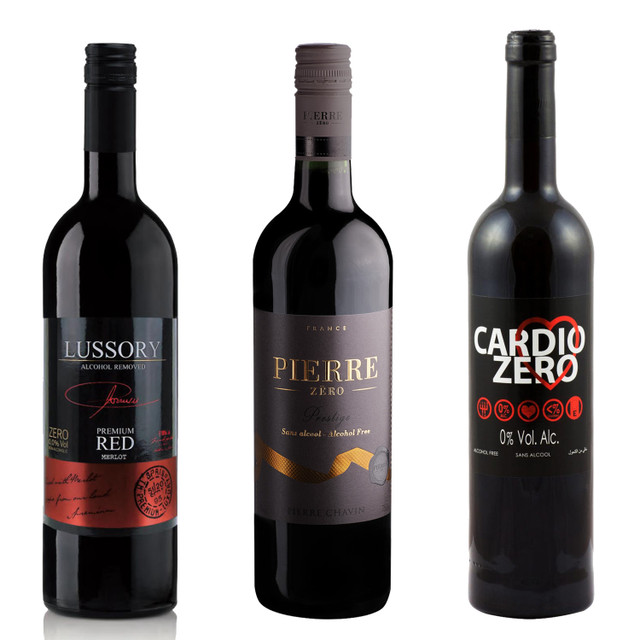The Sparkling Success of Zero Wines A New Era of Non-Alcoholic Wines

The world of wine has undergone significant evolution over the past few decades, particularly with the rise of non-alcoholic alternatives. Sparkling zero wines, in particular, have garnered considerable attention, offering wine lovers a guilt-free indulgence that is both refreshing and sophisticated. Whether for health reasons, personal choice, or lifestyle preferences, sparkling zero wines provide a unique option for those who wish to enjoy the celebratory and flavorful qualities of wine without the effects of alcohol.
What Are Sparkling Zero Wines?
Sparkling zero wines are non-alcoholic wines that retain the effervescence and complexity typically associated with traditional sparkling wines such as Champagne, Prosecco, or Cava. These wines are made from the same grapes as their alcoholic counterparts. Still, the alcohol is removed through various methods such as vacuum distillation, reverse osmosis, or the spinning cone technique. The result is a crisp, bubbly beverage that mimics the characteristics of classic sparkling wines but with 0% alcohol content.
While sparkling zero wines may have started as a niche market for those abstaining from alcohol, they have quickly become a mainstream option for anyone seeking a refreshing, festive drink without the after-effects of alcohol.
The Rise of Non-Alcoholic Wines
In recent years, the demand for non-alcoholic beverages has skyrocketed. This is part of a larger global movement toward healthier living, mindful drinking, and greater inclusivity. Sparkling zero wines perfectly fit within this trend, offering an option for those who want to enjoy the social and celebratory aspects of wine culture without the negative impact of alcohol.
Some people are motivated by health concerns, such as avoiding the empty calories that come with alcohol or minimising the effects of alcohol on sleep and mental health. Others may be pregnant, recovering from addiction, or designated drivers who need an alternative. Sparkling zero wines offer a way to savour special moments, such as New Year’s Eve celebrations or romantic dinners, without the risk of overindulgence or impaired judgment.
The Production Process of Sparkling Zero Wines
The creation of sparkling zero wines involves a process similar to that of traditional sparkling wines, with a few crucial differences. Just like conventional sparkling wine, the grapes are harvested, pressed, and fermented. However, after fermentation, the alcohol is carefully removed to serve the wine’s aromatic and flavour profile.
There are several techniques for removing alcohol from wine, each of which impacts the final product differently:
-
Vacuum Distillation – This method involves lowering the boiling point of the alcohol through a vacuum, allowing it to evaporate at a significantly lower temperature. This process preserves the wine’s delicate flavours, ensuring a high-quality, non-alcoholic result.
-
Reverse Osmosis – A more modern technique, reverse osmosis filters out alcohol while preserving the essential components of the wine, including flavours and aromas. It utilises a specialised membrane to separate alcohol from the wine, leaving behind the non-alcoholic components.
-
Spinning Cone Technique – This process uses centrifugal force to separate alcohol from the wine. The wine is passed through spinning cones, which cause the alcohol to evaporate at a low temperature. This method is highly effective at preserving the original character and complexity of the wine.
After the alcohol is removed, the wine undergoes a second fermentation process to restore its effervescence. This ensures that the final product maintains the signature bubbles and lively mouthfeel of sparkling wines, providing that refreshing “pop” with every sip.
The Flavour Profile of Sparkling Zero Wines
One of the key reasons sparkling zero wines have gained such popularity is their ability to retain the complex flavours of traditional sparkling wines. While each brand and wine will vary, most sparkling zero wines have fruity, crisp, and refreshing notes, balanced with hints of floral or citrus aromas. The natural sweetness of grapes adds a pleasing balance to the acidity, and the bubbles provide a delightful effervescence.
Despite being alcohol-free, many sparkling zero wines are rich in flavour, thanks to the meticulous production methods. Some sparkling zero wines are designed to replicate the taste of champagne, with notes of green apple, pear, and subtle hints of toasted brioche, while others may have a more fruity or tropical profile.
Health Benefits of Sparkling Zero Wines
Apart from the obvious benefit of being alcohol-free, sparkling zero wines offer a range of health benefits that make them an attractive option for consumers. One of the primary advantages is that they are typically lower in calories than traditional wines, making them an excellent choice for individuals seeking to maintain or reduce their calorie intake.
Additionally, the absence of alcohol makes sparkling zero wines an excellent option for those who want to avoid the dehydrating and sleep-disrupting effects of alcohol. Studies have shown that alcohol can negatively impact sleep quality, so non-alcoholic wines provide a solution for those who want to unwind in a social setting without compromising their rest.
Sparkling zero wines also offer an opportunity for people with specific health concerns or dietary restrictions to enjoy wine without the adverse effects. For example, individuals with high blood pressure or those looking to reduce their alcohol consumption due to liver or kidney health concerns can still enjoy the experience of drinking wine without worrying about the adverse effects of alcohol.
A Growing Market and Consumer Base
The non-alcoholic wine market is experiencing rapid growth. The rise in healthy lifestyle products, along with the growing trend of mindful drinking, has encouraged winemakers to innovate and create better, more sophisticated non-alcoholic options. Many major wine producers now offer sparkling zero wines, and new, specialised brands dedicated to non-alcoholic beverages have emerged.
The growing consumer interest in sparkling zero wines is also driven by younger generations who are more health-conscious and socially aware. Many millennials and Gen Z consumers are actively seeking alternatives to alcohol, and they appreciate the variety and complexity that sparkling zero wines offer. This shift in consumer behaviour is likely to persist, leading to even more exciting developments in the non-alcoholic beverage industry.
Conclusion
Sparkling zero wines have undoubtedly carved out a significant niche in the world of non-alcoholic beverages. With their refreshing, bubbly nature, complex flavours, and versatility, they offer a sophisticated alternative to traditional sparkling wines, while also being health-conscious, as consumers seek ways to enjoy social moments without the effects of alcohol. Sparkling zero wines provide an elegant and inclusive option for everyone. With their growing popularity and continuous innovation, the future of sparkling zero wines is undoubtedly bright, offering wine lovers a new and entirely refreshing way to celebrate life’s moments.









